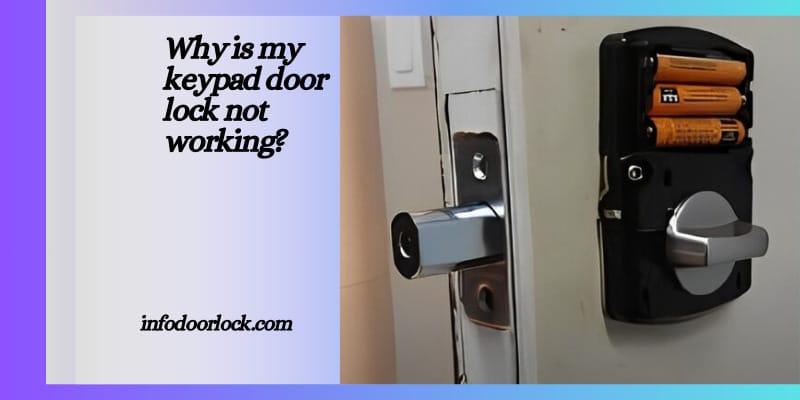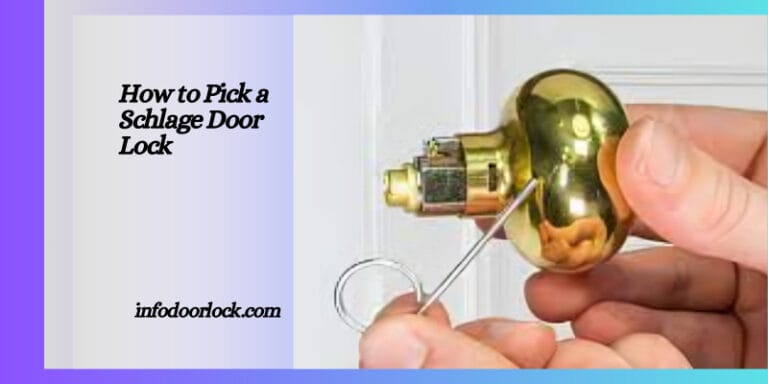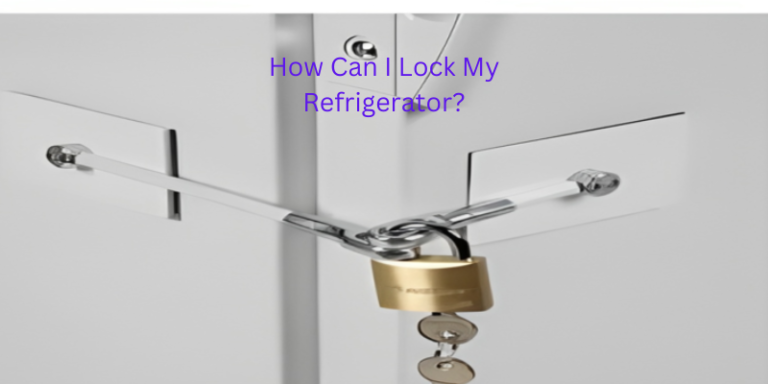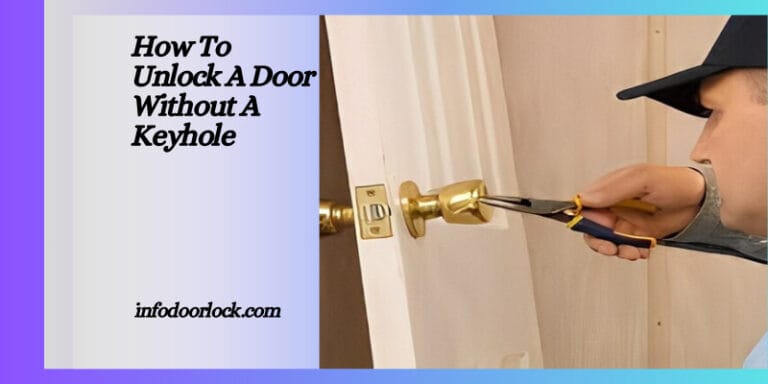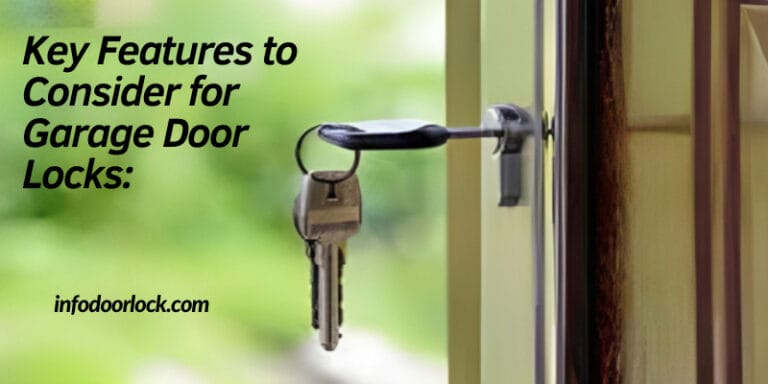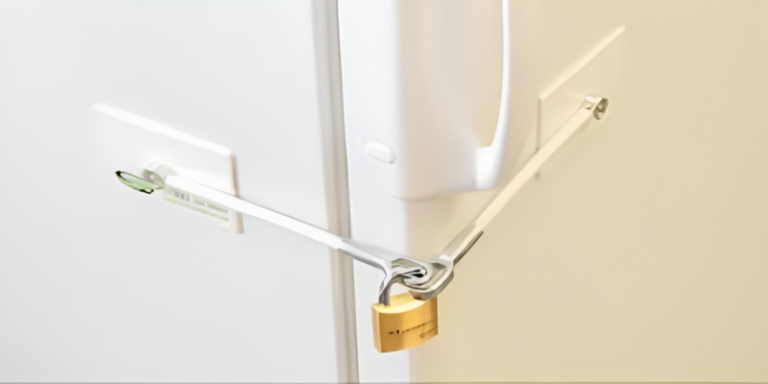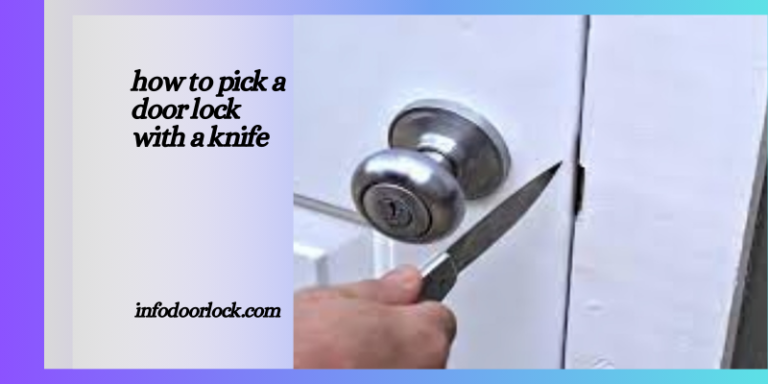keypad door lock not working? (Detailed Guide 2024)
Stepping up for your door, keyless and carefree, the ease of a keypad door lock is hard to overcome. It’s like having a loyal guard, constantly equipped to let you in with only a few taps of your fingertips. But what happens when this modern surprise doesn’t play its element, leaving you puzzled on your step?
It’s a moment that combines a sprint of frustration with a pinch of betrayal, mainly when you’re left questioning, “Why is my keypad door lock not running?” The smallest of problems can frequently be the cause of a non-operating keypad door lock; depleted batteries are the most common culprits.
But do not allow your detective paintings to stop there; dust or particles jamming the keys, wrong code entries, or even inner wiring system faults might be the unseen culprits. A little bit of troubleshooting may simply reveal an easy restoration, getting you back through the door right away.
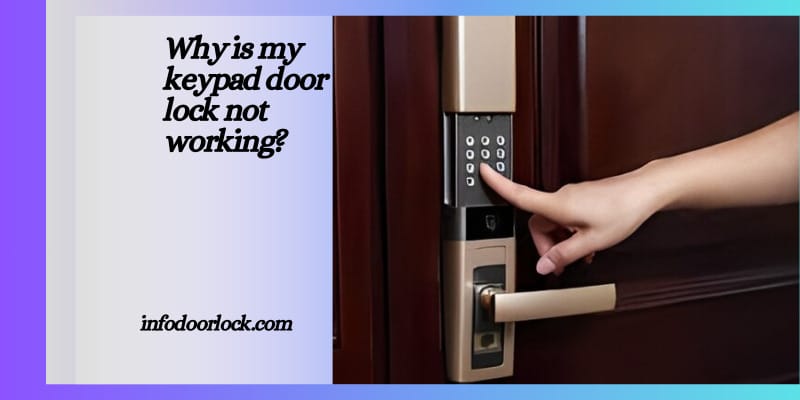
Common Reasons Your Keypad Door Lock Isn’t Working
- Navigating the modern global of domestic protection, keypad door locks have emerged as a beacon of convenience and safety. However, like every generation, they are able to sometimes face hiccups, leaving us scratching our heads properly outside our personal houses.
- Understanding the commonplace culprits at the back of these malfunctions can hastily turn confusion into a brief fix. Let’s delve into the same old suspects that would be inflicting your keypad door lock to be unresponsive.
Dead Batteries
- The lifeline of any battery-operated tool, including your keypad door lock, is, unsurprisingly, its batteries. When they run out of juice, your lock may as well take a snooze.
- Recognizing the symptoms of depleted batteries is critical – possibly the keypad has grown to be much less responsive or the lock is failing to engage well.
- It’s always a great idea to “replace batteries in keypad lock” periodically, even before you observe any telltale symptoms of “battery life” going for walks low. Keeping a clean set available can prevent an unexpected lockout.
Dirty or Damaged Keypad
- The world’s abundance of doors isn’t always kind to our devices. Dirt, dirt, and particles can sneak into the nooks and crannies of your keypad, hindering its potential to sign in inputs correctly.
- Not to mention, unintentional harm from a stray umbrella poke or an enthusiastic puppy can have an effect on the canine. Regular “cleaning keypad door lock” sessions can prevent buildup, and a mold inspection can allow you to spot any “keypad damage” that could need expert attention.
Faulty Wiring or Connections
- Underneath the surface, a community of wires and connections guarantees your keypad door lock features easily. However, those can emerge as compromised over time because of climate, put on, or even curious critters.
- If your lock is behaving erratically or not responding, it might be time to “test keypad lock wiring.” Although this could sound daunting, an expert can unexpectedly diagnose and connect any “connection issues,” restoring peace of mind and your lock’s functionality.
Incorrect Code Entries
- In the rush of everyday existence, it is all too easy to mistype your code or forget about a digit, especially if you’ve recently modified it. Keypad door locks regularly have a protection function that temporarily disables the lock after numerous incorrect attempts to prevent unauthorized access.
- This can result in what feels like a “keypad lockout.” If you observe that this is probably the case, taking a second to frivolously input the suitable code can often remedy the issue. If the lock stays unresponsive, you might need to seek advice from the manual on “resetting keypad lock code” to begin cleaning.
- By keeping a watch on those commonplace problems, you can ensure that your keypad door lock provides the security and convenience it is designed for. Remember, regular renovation and a piece of troubleshooting can go a long way toward keeping your house handy and secure from everything else.
Troubleshooting Your Keypad Door Lock
- When confronted with a keypad door lock that truly is no longer cooperating, it is easy to feel a tad annoyed.
- But fear not! With a few savvy troubleshooting steps, you may frequently locate and connect the issue yourself, restoring the right of entry to your steady space very quickly.
- Here’s a guide to diagnosing and resolving common keypad door lock issues, making sure you are in no way omitted inside the cold (or the warmth, for that be counted).
Resetting the Lock
- Sometimes, all of your keypad door lock wishes are a fresh beginning. Resetting the lock can remedy a slew of issues, from glitchy conduct to a whole non-reaction. Here’s a short rundown on “how to reset keypad door lock”:
Locate the Reset Button:
- This is usually determined at the internal part of the door lock or within the battery compartment.
Press and hold:
- Depending on your lock model, you could need to maintain the reset button for a particular length. Consult your lock’s guide for the exact technique.
Enter a new code:
- After the reset, you’ll probably need to reprogram your lock with a new access code. Choose a steady code that you may remember, but isn’t smooth for others to wager.
Resetting can regularly solve any quirky behavior your lock has been displaying, giving you a clean slate to work from.
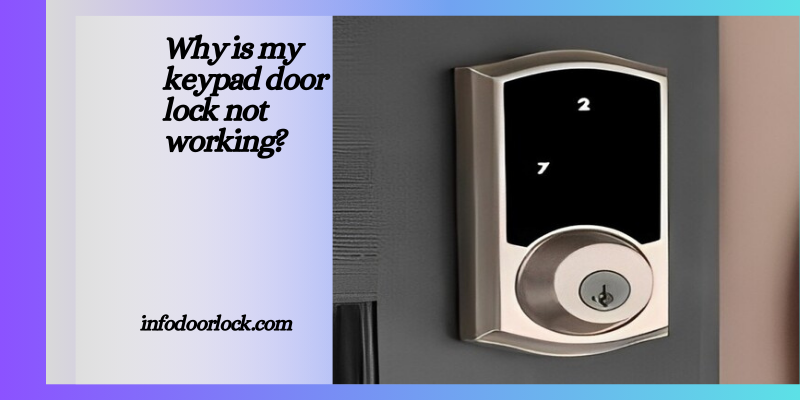
Cleaning the Keypad
Regular maintenance, consisting of “cleaning the keypad,” can save you a multitude of keypad woes. Dirt, dust, and different environmental filth can interfere with the keys’ capacity to check in inputs. Here’s the way to keep your keypad smooth and practical:
Turn off Power:
- Ensure your lock is powered down earlier than cleaning to avoid unintentional inputs or harm.
Use a soft Cloth:
- Gently wipe the surface of the keypad with a soft, dry fabric to remove surface dust and dirt.
Apply Mild Cleaner:
- For stubborn dust, lightly hose down a material with a slight soap and water solution and lightly smooth the keypad.
- Avoid the use of harsh chemical compounds or abrasive substances that could damage the keypad.
Dry Thoroughly:
- Make sure the keypad is completely dry before turning the power back on.
- A clean keypad no longer has the most efficacious features; it actually extends the lifespan of your lock.
Checking the battery connection
- A commonplace but often neglected difficulty is the “battery connection test.”. Ensuring your batteries are well mounted and making excellent contact is crucial for dependable lock operation. Here’s a way to ensure your batteries are in tip-top shape:
Open the battery Compartment:
- Carefully open the compartment, normally positioned on the inner part of the door lock.
Check for corrosion:
- Look for any signs of battery leakage or corrosion at the contacts that can impede strength float.
Ensure Proper Placement:
- Make sure the batteries are hooked up efficiently, with the superb and terrible ends matching the indications in the compartment.
Clean Contacts:
- If the contacts are grimy or corroded, lightly ease them with a cotton swab dipped in vinegar or lemon juice, then dry thoroughly.
Reinstall Batteries:
- Place the batteries back in, ensuring snug health. If the lock nonetheless does not power on, strive for a fresh set of batteries.
- Regularly “installing keypad lock batteries” and checking their connection can prevent sudden energy troubles, keeping your lock prepared to stabilize your house.
- By following these sincere troubleshooting steps, you can keep your keypad door lock functioning smoothly, making sure your house stays steady and available.
- Remember, a touch of preventative renovation can go a long way toward avoiding lockouts and ensuring the longevity of your security investment.
When to Seek Professional Help
- While troubleshooting your keypad door lock can frequently lead to quick fixes, there are instances where the understanding of an expert is invaluable.
- Knowing when to call the cavalry can save you time, defend your home, and ensure your lock is functioning optimally.
- Let’s explore the eventualities in which searching for “professional keypad lock restore” or a “locksmith for keypad lock” turns into the following logical step.
Recognizing the Need for a Professional
- Certain conditions indicate that it is time to seek the services of an expert locksmith or restorer. These consist of:
Persistent Issues:
- If your keypad lock keeps malfunctioning regardless of changing batteries, cleaning, and resetting, there is probably deeper trouble at play.
Physical Damage:
- Visible signs of damage, which include bent keypads, damaged buttons, or harm from an attempted spoil-in, require professional intervention.
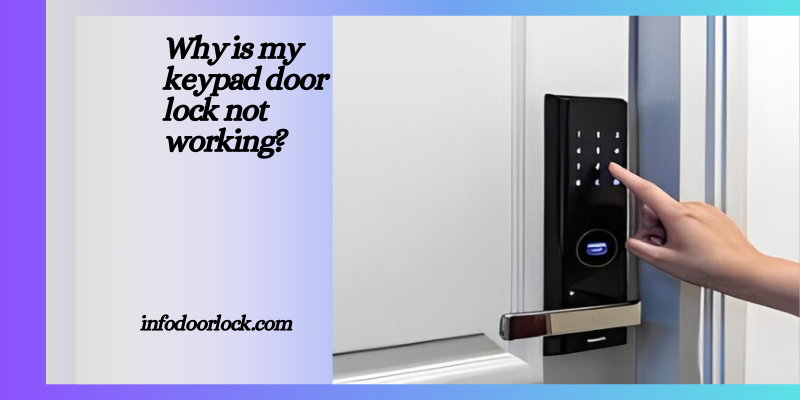
Complex Wiring Problems:
- If you observe that the problem lies inside the lock’s wiring or electric components, an expert has the tools and know-how to competently deal with those issues.
Upgrades and replacements:
- When considering upgrading your lock for better protection features or changing a previous unit, expert guidance may be precious.
Benefits of Professional Assessment
- Opting for a professional assessment comes with a collection of advantages that ensure your lock’s integrity and, by extension, your property’s protection. These consist of:
Expert Diagnosis:
- An expert locksmith can quickly diagnose issues that may not be apparent to the untrained eye, saving you effort and time.
Specialized Tools and Techniques:
- Professionals come geared up with the proper gear and know-how of today’s techniques to restore or update your lock correctly.
Warranty and Guarantees:
- Many expert services come with warranties on parts and labor, offering you peace of mind and safety against future troubles.
Security Advice:
- Beyond simply fixing your lock, a professional can offer valuable advice on retaining your lock and improving your normal home protection.
Table:Battery door lock not working?
When your battery door lock isn’t working, it can be quite a hassle! Let’s break down the potential issues and solutions into a simple table to make things easier to understand:
| Problem | Possible Causes | Solutions |
| Lock doesn’t respond | Dead batteries Loose connections Faulty wiring | Replace batteries Check and secure all connections the wiring for damage and repair or replace as needed |
| Key turns but doesn’t unlock/lock | Misaligned lock mechanism Worn out key or lock cylinder | Adjust the lock mechanism to align properly Replace the key or lock cylinder |
| Lock is slow or unresponsive | Low battery power Internal dirt or grime buildup Cold weather affects battery performance | Replace with new batteries Clean the lock mechanism with an appropriate cleaner Warm up the lock/battery compartment, or use batteries designed for extreme temperatures |
| Erratic behavior or false triggers | Interference from other devices Faulty sensors or electronics in the lock | Identify and remove sources of interference Replace or repair faulty components |
| Lock doesn’t recognize key/card | Dirty or damaged key/card contacts Key/card programming issues Reader malfunction | Clean key/card and contacts Reprogram or replace key/card Repair or replace the reader |
| Unable to change settings or codes | User error in following instructions Electronic or software glitch control panel issues | Review and follow instructions carefully Reset the lock (if possible) to clear glitches Repair or replace the control panel |
| Physical damage to the lock | Attempted break-in Accidental damage Wear and tear over time; | Assess the extent of the damage; minor damage may be repairable Replace parts or the entire lock if necessary |
| Noise while operating | Low battery Mechanical issues such as loose parts or lack of lubrication Deterioration of internal components | Replace batteries to ensure full power Tighten any loose part and lubricate moving components Check for worn-out parts and replace as necessary |

Conclusion:Why is my keypad door lock not working?
- Navigating the ups and downs of retaining a keypad door lock may be a journey filled with small victories and puzzling setbacks.
- We’ve walked through a comprehensive manual geared toward unraveling the common troubles that might render your keypad lock unresponsive, from the silent plea for new batteries to the subtle signs and symptoms of damage and tear that name for a gentle smooth-up.
- Remember, regular upkeep is not pretty much troubleshooting; it is a proactive approach to ensuring the sturdiness and reliability of your protection device.
- We delved into the artwork of resetting your lock, a simple but powerful restore that may regularly breathe new existence into your cussed keypad.
- We also protected the essentials of maintaining your keypad smoothly and ensuring your batteries aren’t just a gift but nicely linked and geared up to energize your lock’s responsibilities.
- Yet, in spite of our first-rate efforts, a few eventualities demand the expertise that the simplest professional can provide.
- Whether it’s the complicated maze of wiring that lies below the surface or the advanced safety functions that current locks boast, understanding when to try to find professional assistance may be the key to safeguarding your peace of mind.
- Now, we turn the ground over to you. Have you faced challenges with your keypad door lock? Perhaps you have located a reachable trick or two in your quest to maintain it in tip-pinnacle form.
- We invite you to share your reviews, questions, or suggestions in the comments below. Your insights should be mild for fellow readers navigating comparable paths.
- And if you find yourself in need of similar help, do not hesitate to reach out. Together, we will ensure the safety gadgets that protect our homes are not simply useful, but flawlessly so.

